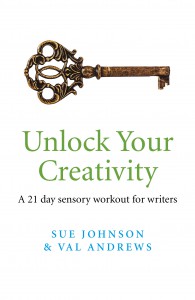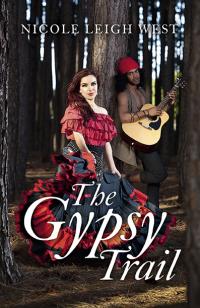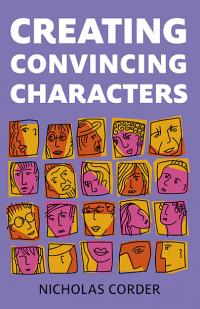
 Pick up any writing magazine and you will find dozens of short story competitions. If you are keen to hone your craft and learn more, the ones that offer critiques by established authors are
definitely worth entering. Even if you don’t win, you may learn something that will put you ahead of the other entrants next time.
Pick up any writing magazine and you will find dozens of short story competitions. If you are keen to hone your craft and learn more, the ones that offer critiques by established authors are
definitely worth entering. Even if you don’t win, you may learn something that will put you ahead of the other entrants next time.
Take note of the following points to make sure you submit the best possible entry this time!
Read the rules carefully before you start to think about the story. Up to a quarter of competition entries are disqualified because writers have disregarded one or more of the rules. Make sure you are not one of them.
Is there a theme? If so, take time to think of a fresh angle. A good tip is to take a large sheet of paper and try to come up with fifteen possible ideas. Discard the first five you think of – most people will have gone for these. The best ideas are usually the ones that have been hardest to find. Stories with a touch of humour or an unusual twist will usually stand out from the crowd.
Who is your main character? What is memorable about them? Are they interesting enough to hold the reader’s attention? Write a short biography (approximately 150 words) for that person before you begin work on the story. Some of the information won’t appear in the story, but it will add depth to the character if it is in your mind when you are writing. Can you find a magazine picture or old photo that looks like them? Remember to give your character a name. It’s surprising how many competition entries have characters with no names.
What is the character’s problem at the beginning of the story? For a story to sustain the reader’s interest there needs to be an element of conflict. This doesn’t mean people being nasty to each other or yelling and screaming – it means that there needs to be sufficient action to keep the reader turning the pages. Many competition judges report that they read a lot of stories where there is no plot. Stories are about change – and your characters should change in some way by the end of the story.
Where is the story set? Your reader needs to be able to picture where the events are taking place. The best way to do this is to show your character(s) in action in the setting. Visualise your story before you start writing so that you can see places and people clearly in your mind. Remember that your task is to entertain your reader!
What time of year is it? Use weather and the seasons to create mood, atmosphere and dramatic tension. For instance, additional conflict could be added to a story if a thunderstorm occurs when your characters are having an argument and the heroine drives off at great speed in dangerous conditions.
Use the senses. Colours, sounds, smells and textures all help to give the reader a full picture of what is happening. I once critiqued a story set in an old-fashioned kitchen. The writer was unhappy with what she had written. However, the story was transformed when she added the smell of bread baking, the orange and yellow flames leaping in the fireplace, the sound of the grandfather clock ticking and the texture of the purple velvet cushion on the rocking chair by the fire.
Keep your first paragraph short so that the reader is drawn into the story. Aim for a good first sentence – known as a ‘narrative hook’ – that will engage the interest of your reader and makes them want to know what happens next.
Build the story towards a strong ending. Don’t just stop because you’ve run out of words! Allow the main character to solve their own problems – no lottery wins or previously unknown great aunts dying and leaving them a fortune. Similarly, unless you can think of an original way of doing it (for example Sue Townsend in ‘The Queen and I’) don’t end with ‘and I woke up to find it was all a dream.’
Dialogue should add to the development of the story or show the character in action. Read it aloud to make sure it flows properly. If a person speaks in a dialect, give a flavour of it but don’t try and create it exactly on the page. Too many dropped aitches look like a line of tadpoles going across the page and it isn’t easy to read. Be ruthless - cut any sections that hold up the action. Remember that what people say isn’t necessarily what they are thinking. Don’t forget facial expressions.
Edit your work carefully. For instance, if you change the name of a character as you write, then make sure that you don’t leave any traces of the old name. I once read a competition story where a writer had changed the name of the main character’s husband from Fred to Charlie. Unfortunately, at the editing stage, she failed to make all the changes, creating a confused ending that spoiled an otherwise good story.
A good title will help to make your story memorable. Again, try making a list of possible titles and pick the best one. Look for inspiration in a book of poetry, proverbs or the Bible. Titles that include a colour or image are also good – for instance “The Blue Glass Jug.” Keep a special notebook for good titles and first sentences.
Keep within the stated word count. Your story is likely to be disqualified if you exceed it. If you need to lose a few words, go through the story and look for words that you’ve over-used (we all have them!). Use strong verbs so that you can cut any adverbs. For instance, it gives a stronger picture if you say “he raced” rather than “he ran quickly.”
Check your punctuation and spelling. Print a copy of the story and read it carefully. Double-check any words you’re not sure about in the dictionary. Don’t rely on the computer spell-check. If there are two or more possible spellings of a word, make sure you’ve got the right one. I once judged a competition where one entrant wrote about a character riding across a ‘baron’ landscape. There were several other howlers, spoiling what was potentially a good story.
Check the rules again. Is there anything you’ve overlooked? I once had to reprint a story because the rules said the page numbers should be on the top right hand side of the page and I had put them where I usually do – at the bottom.
Does your layout look professional? Double-space your work unless told otherwise. Indent the first line of each new paragraph and each new line of dialogue. Don’t leave additional gaps between paragraphs unless you are indicating a change of scene or viewpoint.
Print your work on one side of white A4 paper. Use a size 12 font and Times New Roman or Arial typeface. Don’t print it on yellow paper with a border of fluffy ducklings in the hope of attracting the attention of the judges. You will do so – but for the wrong reasons!
If you would like your story returned or have requested a critique, remember to enclose a large envelope with sufficient return postage. (Some competitions state that no entries will be returned).
Keep a copy of your story. Don’t send your one and only copy.
Post your entry well before the closing date. Keep a record of what you have sent and when the results will be announced. After that date, you will be able to try it with another competition if you haven’t been successful this time.
Finally – if you don’t succeed this time – try again! Read your critique carefully if you have one, but remember that it’s only one person’s opinion. Learn to trust your own judgement. Read it through again and see if there are any improvements you can make before you send it out again.
Good luck and keep going. Remember that you make your own luck by being persistent!
Sue Johnson www.writers-toolkit.co.uk
Sue Johnson is published as a poet, short story writer and novelist. Her first lucky break came when a story her college lecturer didn’t like was short-listed in a competition. The story ‘It all seemed like yesterday’ was published in ‘Woman.’
Buy Paperback: Amazon UK Barnes & Noble Hive Indiebound
Buy eBook: Amazon UK Barnes & Noble Hive
This article was first published in The Writer's Wheel Magazine Issue 3
Categories:
0 comments on this article







